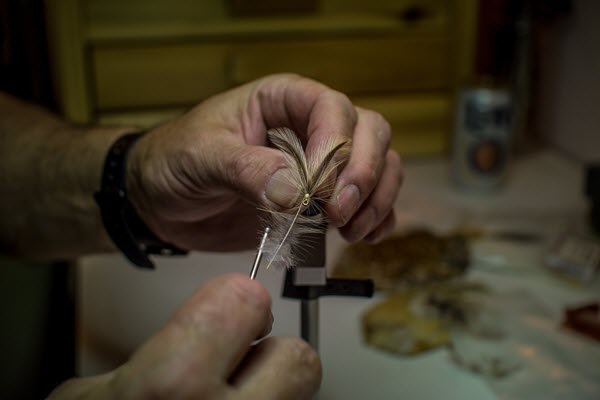Fly tying is an ancient art that has been around for centuries. It is a craft that involves creating artificial flies that imitate the behavior and appearance of various insects, baitfish, and other aquatic creatures. These artificial flies are used in fly fishing to attract fish and entice them to bite. The art of fly tying requires a combination of creativity, patience, and technical skill, and it can be enjoyed by people of all ages and skill levels.
Related: The Best Fly Fishing Destinations in North America
In this article, we will explore some of the tips and techniques that can help you create the perfect fly for your next fishing trip.

The Art of Fly Tying
Materials
The first step in creating a fly is selecting the right materials. There are many different types of feathers, fur, and synthetic materials that can be used to tie flies. Some of the most common materials include:
- Feathers: Feathers are a crucial component of most flies. They can be used to create wings, tails, and hackles. Common types of feathers used in fly tying include rooster hackle feathers, marabou feathers, and pheasant tail feathers.
- Fur: Fur is another popular material used in fly tying. It can be used to create bodies, wings, and tails. Common types of fur used in fly tying include rabbit fur, deer hair, and elk hair.
- Synthetics: There are many different synthetic materials that can be used in fly tying, including chenille, flashabou, and synthetic quills. These materials can add sparkle, shine, and texture to your flies.
Tools
In addition to materials, you will also need a variety of tools to create your flies. Some of the most important tools include:
- Vise: A vise is a tool that holds the hook while you tie the fly. It allows you to rotate the hook so that you can easily tie materials onto it.
- Bobbin: A bobbin is a small spool of thread that is used to hold the thread while you tie the fly. It allows you to control the tension of the thread and make precise wraps.
- Scissors: Scissors are used to trim materials and cut thread. A good pair of scissors is essential for fly tying.
- Hackle pliers: Hackle pliers are used to hold feathers while you wrap them around the hook. They allow you to make tight, even wraps.
Techniques
Now that you have your materials and tools, it’s time to start tying your fly. There are many different techniques that can be used to create different types of flies. Here are a few basic techniques to get you started:
- Thread control: Controlling the tension of the thread is essential for creating a tight, secure fly. Start by making a few wraps around the hook to secure the thread in place, then make a few more wraps to create a thread base. Use your bobbin to control the tension of the thread as you tie in additional materials.
- Wrapping materials: When you are wrapping materials around the hook, it’s important to make tight, even wraps. Use your hackle pliers to hold the materials in place, and make sure that each wrap is snug against the previous wrap. This will help to create a durable fly that won’t fall apart after a few casts.
- Creating tails: To create a tail, select a few feathers or pieces of fur and tie them onto the hook. Make sure that the tail is evenly spaced and the right length for the fly you are tying.
- Making wings: There are many different types of wings that can be used in fly tying, including dry fly wings and streamer wings. To create a wing, select a few feathers or pieces of fur and tie them onto the hook. Make sure that the wing is evenly spaced and the right size for the fly you are tying.




